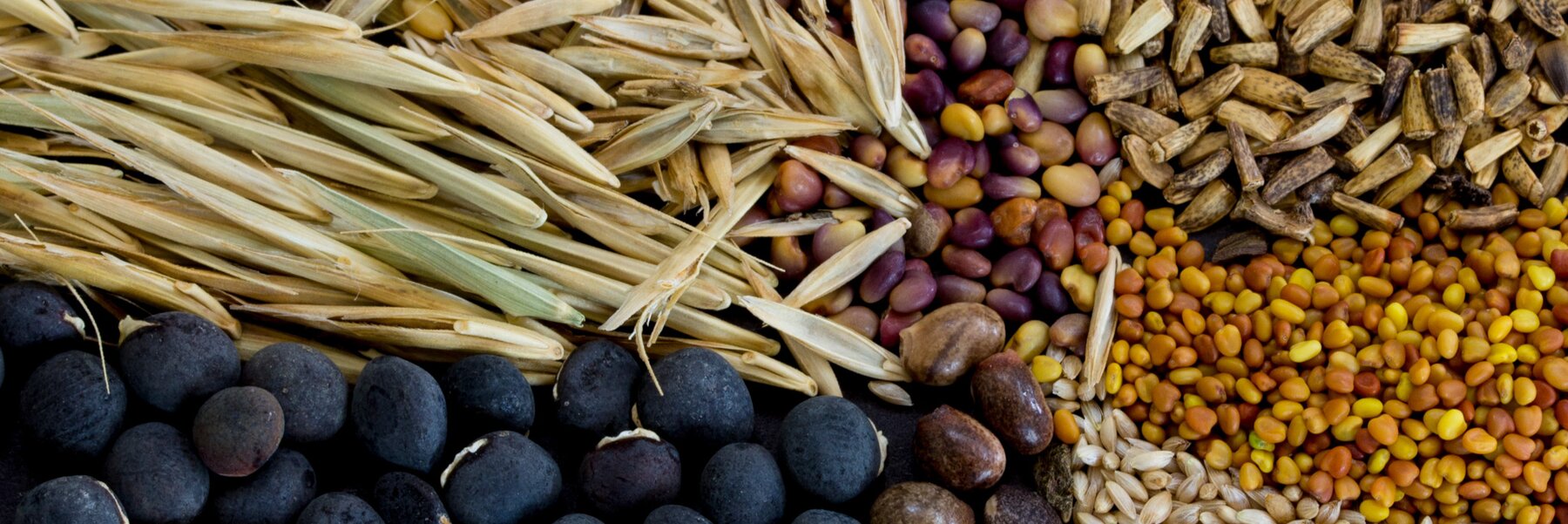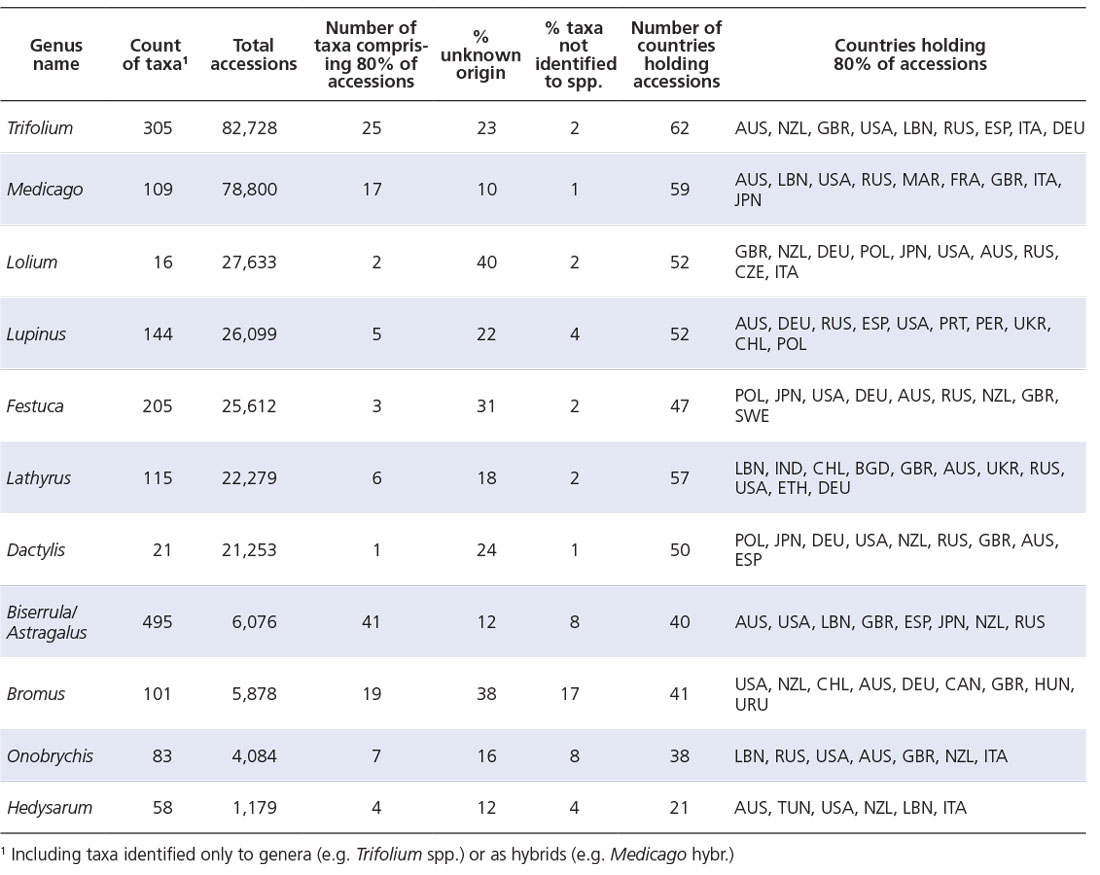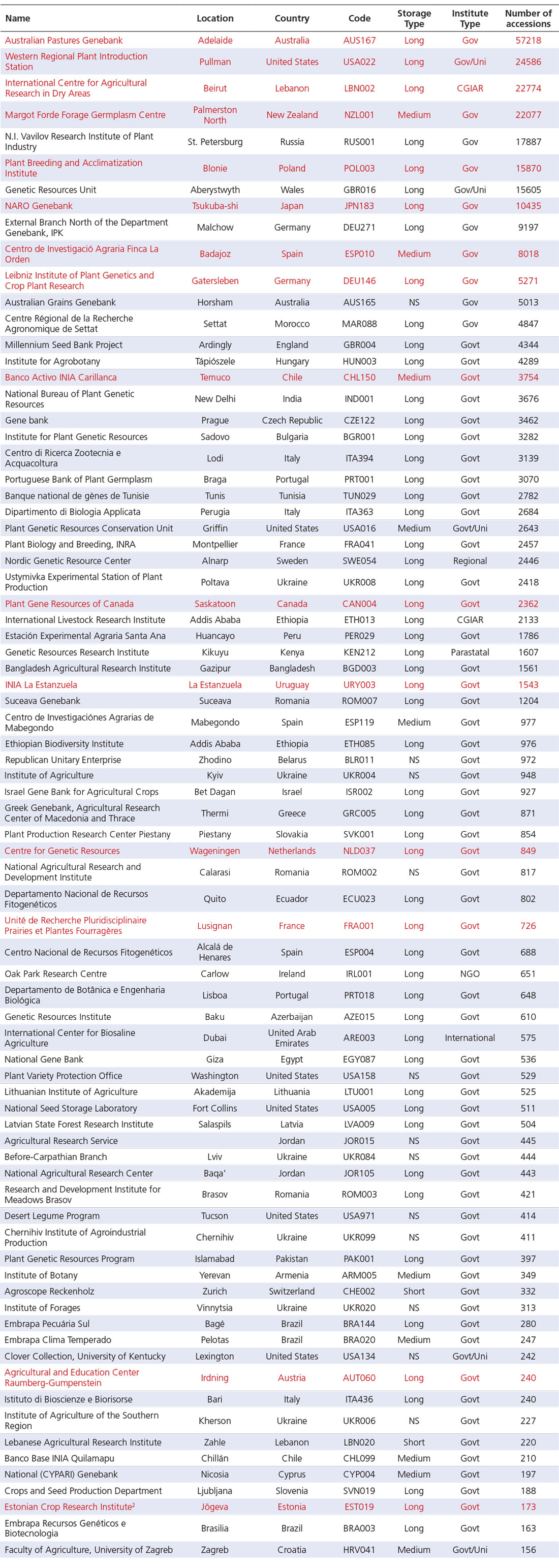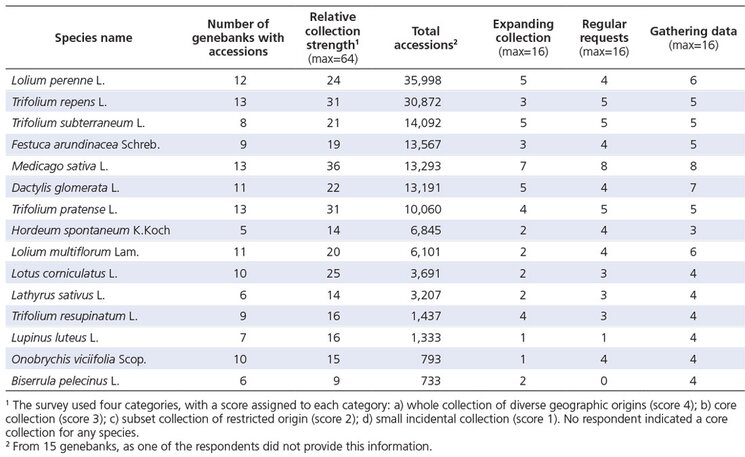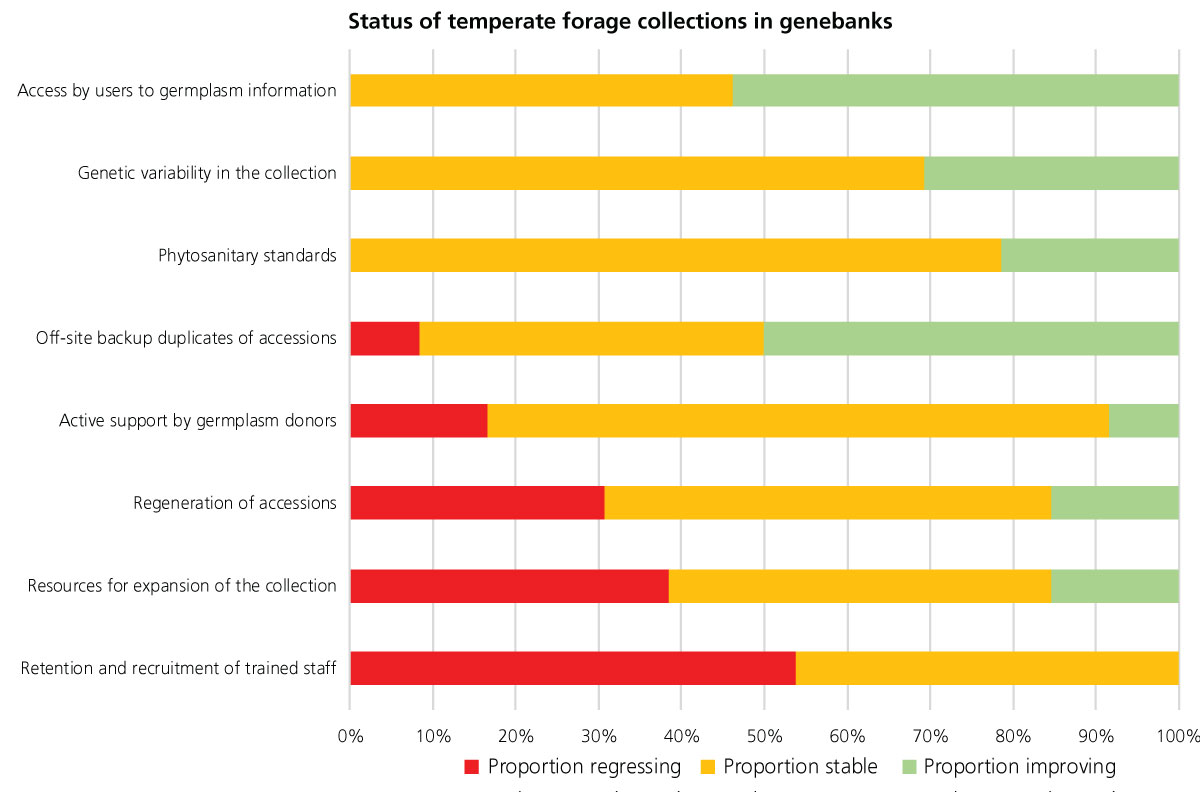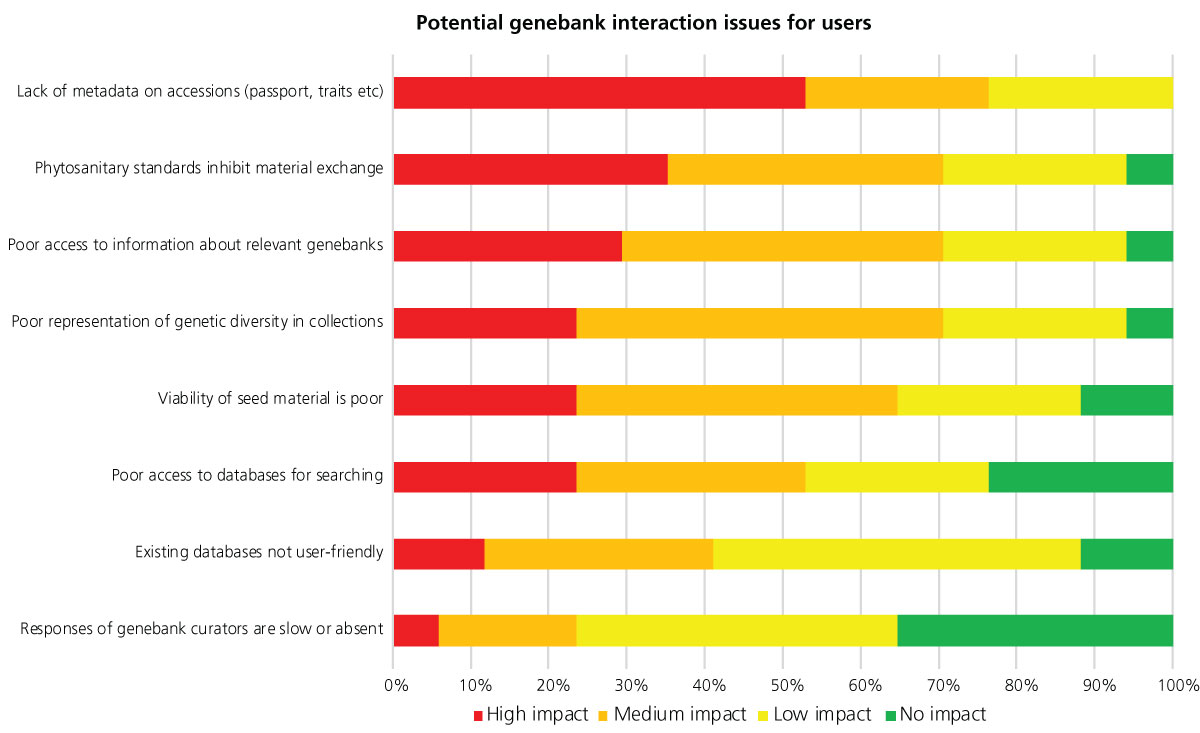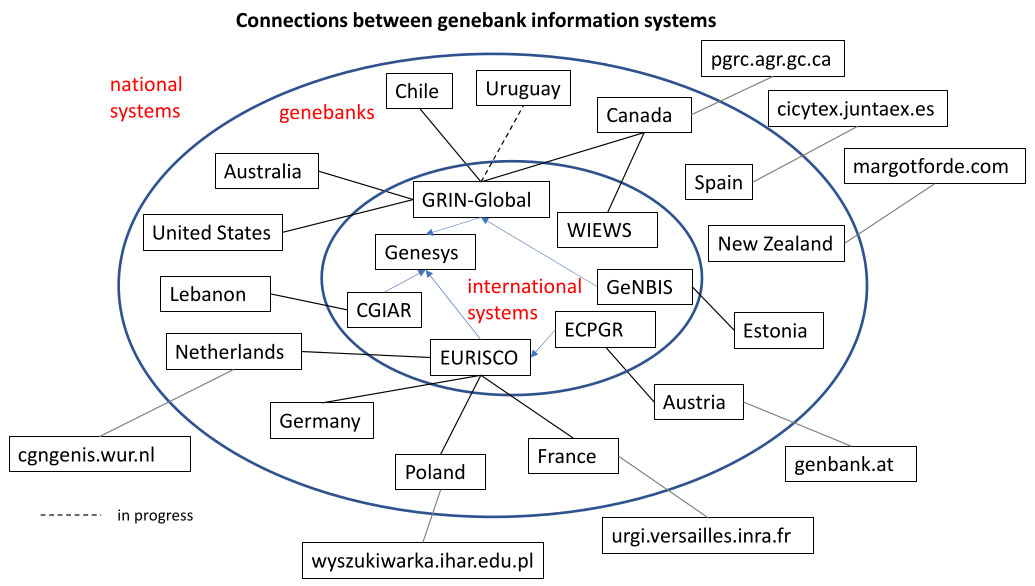Global Strategy for the Ex Situ Conservation of Temperate Forages
Global strategy for the ex situ conservation of temperate forages was published in 2021 (Global Crop Diversity Trust 2021). This document, developed with the input of a large number of experts, aims to provide a framework for the efficient conservation and effective use of globally important collections of temperate forages genetic resources.
The strategy incorporates the ex situ conservation of herbaceous plant species (and subordinate taxa) used for grazing livestock forages collected from or used within the temperate zone (30–60° latitude), excluding subtropical and tropical forages used within the temperate zone. This webpage provides a summary of some of the its key findings and of the recommendations for priority actions.
Size of collections and their locations
The table below shows the genebanks identified from Genesys/WIEWS database search as holding accessions of the sample list genera (Astragalus, Biserrula, Bromus, Dactylis, Hedysarum, Lathyrus, Lolium, Lupinus, Medicago, Onobrychis and Trifolium), in order of total number of accession for those genera. Those providing survey responses identified in red text.
Recommendations for priority actions
The following high-level strategic actions are proposed::
A . Taxa categorization and prioritization
categorize temperate forage germplasm and priori- tize activity within these groups. For categorization, several factors may be considered to determine useful groups, including existing collection status, global relevance, ecogeographic zone (within the temperate zone) and type of use. Prioritization will require consideration, within the above categories, of which taxa should be focused on and the specific needs for those taxa or that group, such as standardization of descriptors, urgent collection, underrepresented traits and requirements for new research.
B . Improvement of data curation
-
Update or develop new standardized descriptors
for the prioritized species in Strategic action A.
-
Engage database specialists and taxonomists to
work with curators.
-
Work with curators, perhaps using short-term
secondments of specialists from the lead agencies identified in Strategic action A, to collate data and transfer the data to global databases.
-
Incorporate user-generated data in accessible data- bases where there is no commercial restriction.
C . Germplasm activity rationalization
- Minimize redundant activity within the global. collection of any given taxon. An example of redundant activity is the regeneration of dupli- cate accessions by different genebanks, which would represent a waste of staff time and facility resources.
-
Fill gaps in the global collection of any given taxon, to best represent the true diversity of the species.
D . Human resource development
initiatives in this regard should initially focus on support for data curation (Objective B) with associated needs for database and taxonomic skills. In addition, support for wider participation in existing regional networks or the establishment of regional networks would be valuable
Partners and donor
The development of this crop conservation strategy was funded by the German Federal Ministry of Food and Agriculture (BMEL) as part of the three-year project led by the Crop Trust: Breathing New Life into the Global Crop Conservation Strategies: Providing an Evidence Base for the Global System of Ex Situ Conservation of Crop Diversity. The Crop Trust also cooperated with the Secretariat of The International Treaty on Plant Genetic Resources for Food and Agriculture (ITPGRFA) in the development of this document.




